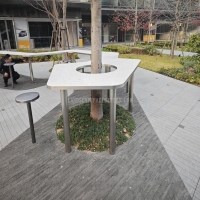Welcome to the website for landscape facilities products and knowledge.
How does the table’s design account for different cultural preferences in workspace design?
In today's globalized work environments, table design plays a pivotal role in accommodating diverse cultural preferences, directly impacting productivity and employee satisfaction. Different cultures prioritize varying aspects of workspace interaction; for instance, Western offices often favor open, collaborative tables that encourage team communication and idea-sharing, reflecting values of transparency and innovation. In contrast, East Asian designs may incorporate more modular or partitioned tables to support privacy and focused individual work, aligning with cultural emphases on hierarchy and concentration. Additionally, materials and aesthetics are carefully selected—Scandinavian-inspired tables might use light wood for a minimalist, egalitarian feel, while Middle Eastern influences could feature intricate patterns to create warm, communal settings. Ergonomics further adapt to cultural norms, such as adjustable heights for sit-stand preferences in health-conscious societies or low tables for floor-seating traditions in some Asian contexts. Designers also integrate technology seamlessly, with built-in power outlets and connectivity ports to meet the digital demands of multicultural teams. By blending flexibility, aesthetic sensitivity, and functional adaptability, modern table designs not only respect cultural diversity but also enhance inclusivity, fostering environments where every employee feels valued and efficient. Ultimately, this thoughtful approach leads to workspaces that are not just functional but culturally resonant, driving global business success.
Related search:

Recommendation
An outdoor bar counter with stainless steel and terrazzo materials in an irregular shape